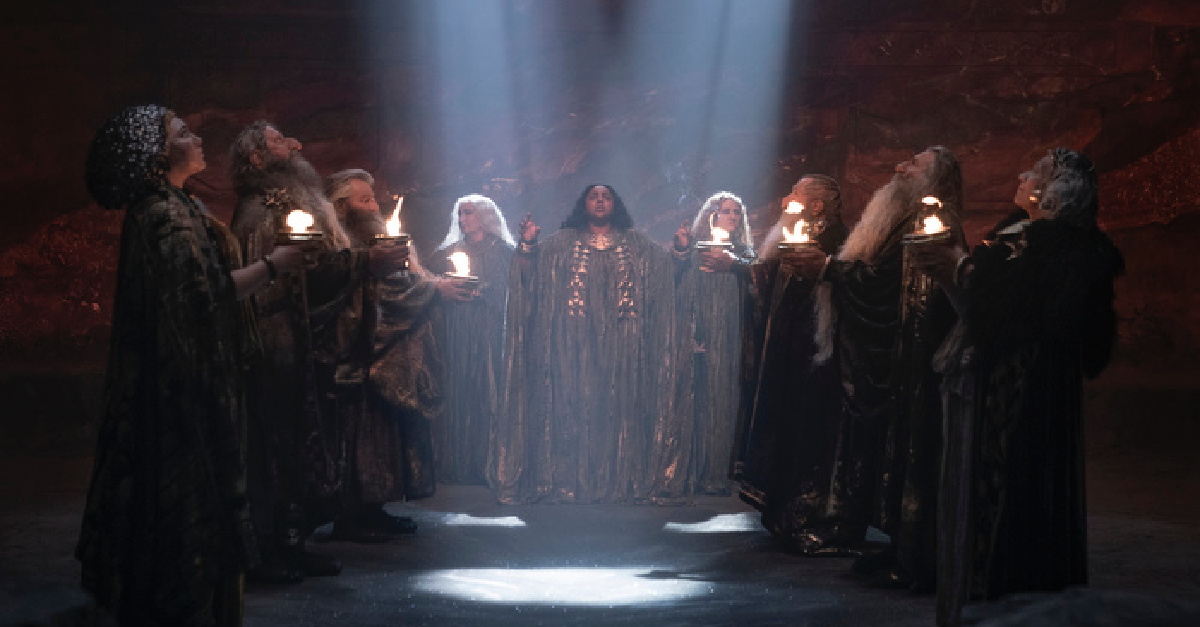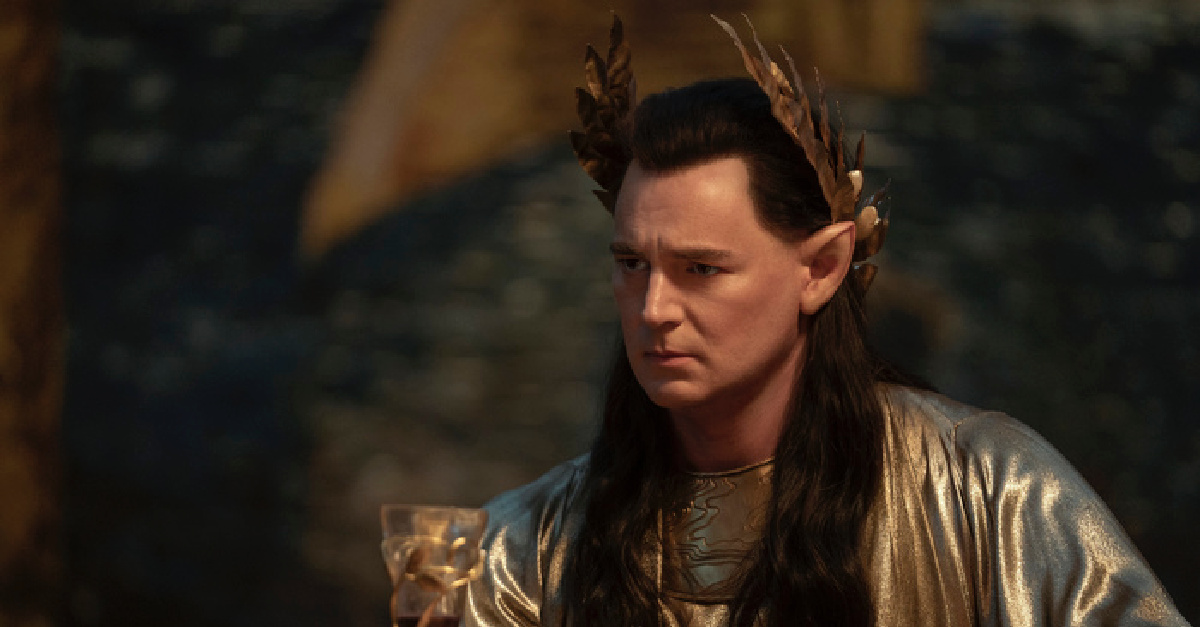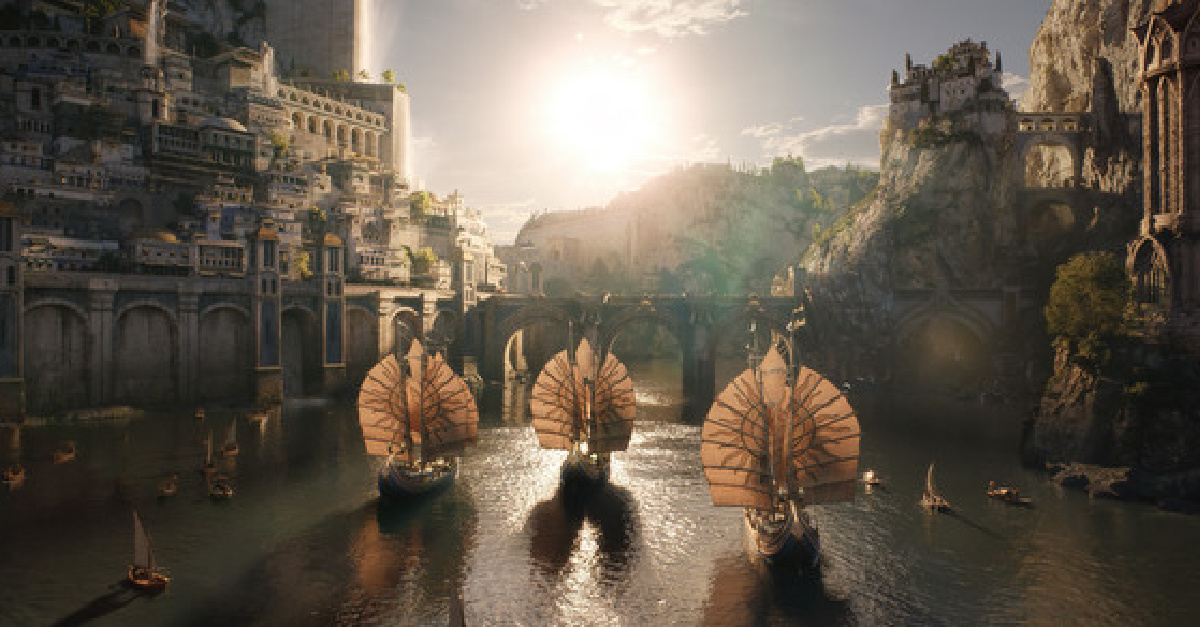Galadriel is a young female elf who has everything that's needed to be a successful warrior in Middle Earth. She's courageous. She's determined. She opposes evil at all costs.
She's also a little rebellious.
Thus, when her king declares that the elves' battle against the elusive and evil Sauron is over, Galadriel refuses to lay down her arms. After all, Sauron killed her older brother. And even though her fellow warriors claim that "evil is gone" from Middle Earth, Galadriel doesn't believe it.
"Evil does not sleep," she says.
Galadriel, the commander of the northern army, says she will continue her hunt for Sauron – even if she has to do it alone.
"My brother gave his life hunting Sauron. His task is now mine," she says.
The much-anticipated Amazon series The Lord of the Rings: The Rings of Power (TV-14) tells the story of Galadriel and dozens of other Middle Earth heroes as they protect their kingdom.
Here are four things you should know about The Rings of Power:
Photo courtesy: ©Amazon, used with permission.

1. It's a Prequel to the Movies and Books
The Lord of the Rings: The Rings of Power – scheduled for five seasons – is a prequel to the original books and movies we have come to love. Those movies, of course, were The Lord of the Rings: The Fellowship of the Ring (2001), The Lord of the Rings: The Two Towers (2002) and The Lord of the Rings: The Return of the King (2003).
The Rings of Power is set thousands of years before those stories. As we learn in the opening sequence, it is based on the J.R.R. Tolkien books and their "appendices" – that is, the information Tolkien placed in the back of the novels to set the background to his universe. (His books were published in the 1950s.)
"It was like Tolkien put some stars in the sky and let us make out the constellations," showrunner J.D. Payne told Empire. "In his letters [particularly in one to his publisher], Tolkien talked about wanting to leave behind a mythology that 'left scope for other minds and hands, wielding the tools of paint, music and drama.' We're doing what Tolkien wanted. As long as we felt like every invention of ours was true to his essence, we knew we were on the right track."
There are eight episodes in the first season.
"There are things in the first season that don't pay off until Season 5," Payne said.
All total, the series will carry a price tag of $1 billion – the most expensive television series ever made.
Photo courtesy: ©Amazon, used with permission.

2. It Preserves Tolkien's Good-vs.-Evil Worldview
For decades, Tolkien's books have been a favorite among Christians because of the plots' good-vs.-evil worldview. (Tolkien, who was Catholic, famously influenced C.S. Lewis to embrace Christianity.)
Thankfully, The Rings of Power maintains this worldview. In fact, it's at the heart of the story. Rings of Power even presents a Genesis-like Garden of Eden, with a fall and a redemption to follow.
In the opening minutes, we see happy children playing in the field as the narrator tells us, "We had no word for death, for we thought our joys would be unending. We thought our light would never end."
But then the evil Morgoth spoiled this pristine world, sparking a battle between the legion of elves and Morgoth and his orcs. Eventually, the elves fled their home of Valinor and journeyed to Middle Earth, where they encountered strange creatures and untold perils – and where Morgoth followed. Although the elves defeated Morgoth, Middle Earth was left in ruins. Morgoth's evil successor, Sauron, continued this reign of doom.
At the beginning of The Rings of Power, we learn that the elves hunted Sauron for centuries but never found him. Most of the elves gave up, believing he was a "memory" and no longer a threat.
Yet the series' main protagonist, the elf army leader Galadriel (Morfydd Clark), refuses to stop searching for Sauron, believing evil must be stamped out in her world.
"Evil does not sleep," she says. "... It waits until the movement of our complacency. It blinds us."
Galadriel's words sound almost biblical, don't they?
Meanwhile, in another biblical parallel, the series also presents a dramatic contrast between darkness and light. We see Galadriel, as a young girl, being told to keep her eyes fixed on the light of Middle Earth. She is given an illustration: A stone cannot float, she is told, because it "sees only downward – the darkness of the waters, fast, irresistible." By contrast, a ship can float because its gaze is "not downward but up, fixed upon the light that guides her."
Photo courtesy: ©Amazon, used with permission.

3. It's Epic and Magnificent
The Rings of Power is similar to its theatrical predecessors and features jaw-dropping landscapes, towering, majestic cities and other-worldly creatures. Snow-capped mountains and ever-flowing waterfalls are seemingly around every corner. So are golden aspens, green valleys and blue skies.
The series is epic, stunning and magnificent. It stays true to Tolkien's world. (The first two episodes hint that we'll learn the origins of the ring.) It has a cinematic look and feel. It's also fun and – at times – funny. (An elf-vs.-dwarf boulder-splitting contest? Yes, thank you.)
If it were on a big screen, it would be even more impressive. Then again, few of us have the patience for a 50-hour movie. (That's the scheduled run time of all five seasons.)
Yet the at-home presentation of Rings of Power has plenty of benefits. For starters, you can watch it multiple times without purchasing a movie ticket. (The series is jam-packed with plenty of names, places and facts to keep "Tolkienists" busy.) You also can use closed captioning – a near-requirement if you are to discern every whisper and accent.
The series incorporates on-screen maps and location names – a helpful addition for beginners and experts alike.
Photo courtesy: ©Amazon, used with permission.

4. It's Family-Friendly (So Far, at Least)
If you're a Tolkienist who follows online rumors, then you've likely been anxious about Rings of Power. Fans feared that Amazon was turning it into an R-worthy Game of Thrones and filling it with language and nudity.
Thankfully, though, Rings of Power is rated TV-14, the television equivalent of PG-13. In the two episodes that Crosswalk screened, there was no coarse language, nudity or sexuality. Although it had a moderate amount of violence (including an implied beheading of an evil creature), it stayed in the non-R realm.
If your family was comfortable with The Lord of the Rings trilogy – all of which were rated PG-13 for battle sequences and frightening images – then you'll likely be comfortable with Rings of Power, too.
We watch deadly sword fights and massive war-like battles. We also see a few creatures that will give young children nightmares.
Co-creator and showrunner Patrick McCay told Vanity Fair the goal was "to make a show for everyone, for kids who are 11, 12, and 13, even though sometimes they might have to pull the blanket up over their eyes if it's a little too scary."
"We talked about the tone in Tolkien's books. This is material that is sometimes scary – and sometimes very intense, sometimes quite political, sometimes quite sophisticated – but it's also heartwarming and life-affirming and optimistic. It's about friendship, and it's about brotherhood and underdogs overcoming great darkness."
Granted, I've watched only two hours of a 50-hour series. Still, it's off to a good start. And so far, Rings of Power is stellar and family-friendly.
Entertainment rating: 5 out of 5 stars.
Family-friendly rating: 4 out of 5 stars.
Photo courtesy: ©Amazon, used with permission.
Michael Foust has covered the intersection of faith and news for 20 years. His stories have appeared in Baptist Press, Christianity Today, The Christian Post, the Leaf-Chronicle, the Toronto Star and the Knoxville News-Sentinel.